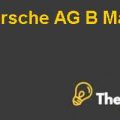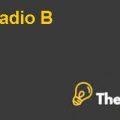
PINEWOODMOBILE HOMES, INC. Case Solution
Problem Diagnosis
The CEO of Pinewood Mobile Homes Company has been considering a restructuring plan for his company in March 2011. He wants to restructure the business by a debt exchange because the company is currently highly leveraged and the current cash flows of the company are not enough to repay the outstanding debt obligations. The reason for this is that the company has been fueling its growth and expansion plans by borrowing heavily prior to the housing market crash and now the company and its management has lost the credibility and the reputation to compete in the marketplace. Therefore, if the management does not go ahead with the restructuring plan, then it would be forced to file for chapter 11 bankruptcy however, in order to implement the restructuring plan the management will have to receive consent from its investors. Detailed valuation of the company needs to be performed and all the options need to be compared before a recommendation is made to Walker.
Analysis
Question 1
Is Pinewood an economically viable firm that should be restructured? What are available restructuring options? What are investors’ views of the company prospects? Would you consider investing in any of Pinewood’s outstanding securities based on their current market prices?
Pinewood Mobile Homes is currently not an economically viable firm. Currently, the equity value of the company is negative and the capital structure of the company contains a high level of debt so the company is highly levered. The EcoLiving division of the company had started to generate excessive losses after 2010 and the management was also considering the option of selling this division of the company.
Moreover, the company had also received the offer for the sale of this division for a value of about $ 365 million from Dycon Industries. Along with this, the preferred dividends of the company had been suspended for six quarters. The internally generated cash flows of the company were not enough to support the payment of the debt obligations. These shortages in the cash flows of the company had resulted in the ultimate shortfall of the revolving credit facility of the company. The limit for this revolving credit facility had also been reached and Walker was not able to negotiate an increase in the credit facility of the company.
However, despite these issues the revenue of the company was much higher than its most of the comparable firms. Moreover, the operating margin and the net profit margin of the firm were also higher. Nonetheless, the company was highly levered with a debt to capitalization ratio of 88.36% as compared to the other companies.Therefore, there is still hope left that the company could be restructured. The most feasible restructuring option for the management of Pinewood Mobile Homes is to basically replace the current outstanding debt of the company by common equity of the company and showing the investors about the favorable prospects of the company once the current debt capacity is handled.
The proposed exchange offer as shown in exhibit 7 of the case is a good option to restructure the company. Furthermore, the prospects of the investors regarding the company’s performance are not positive and the current creditors of the company were advocating the liquidation of the company or sake of the Eco Living division of the company. The investors could clearly see that the company was short of cash and that it had no means by which it could service its operations and ultimately the company would default on the debt.
Therefore, the creditors and other investors were more interested that the company should go ahead with Chapter 11 formal bankruptcy. Lastly, based on the current market prices as of march 1, 2011 of Pinewood Mobile Homes, I would not be investing in any of the securities of the company. The share price of the company had been declining consistently over the past few years and the profitability of the company is also negative. Lastly, the cash flows of the company are not enough to repay its debt or pay any dividends, therefore, as an investor I would not invest in any securities of the company.......................
This is just a sample partial case solution. Please place the order on the website to order your own originally done case solution.










